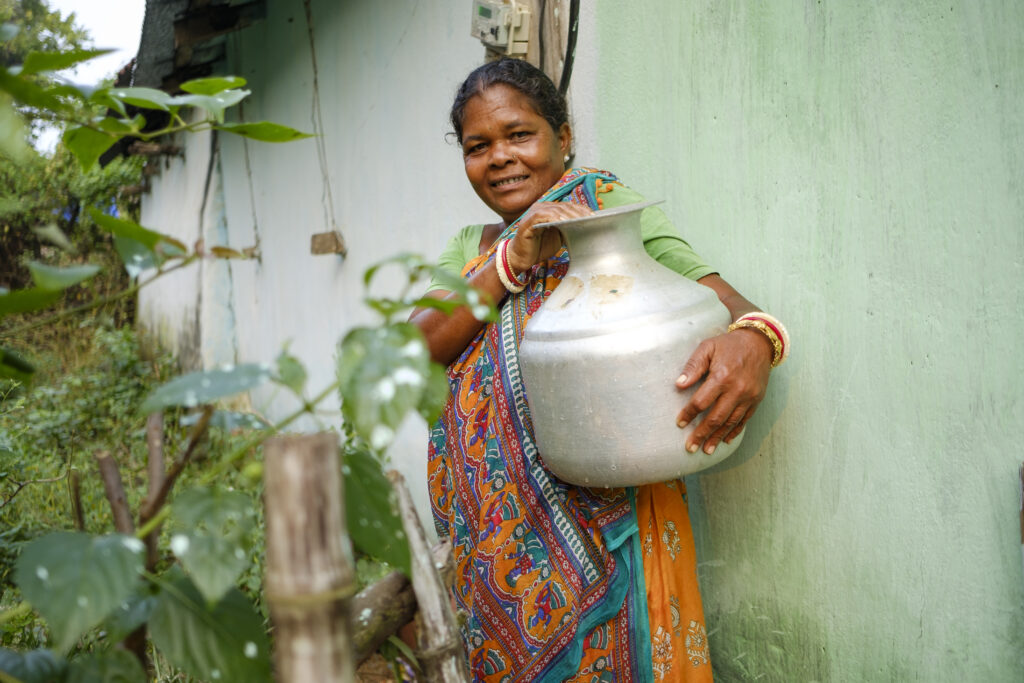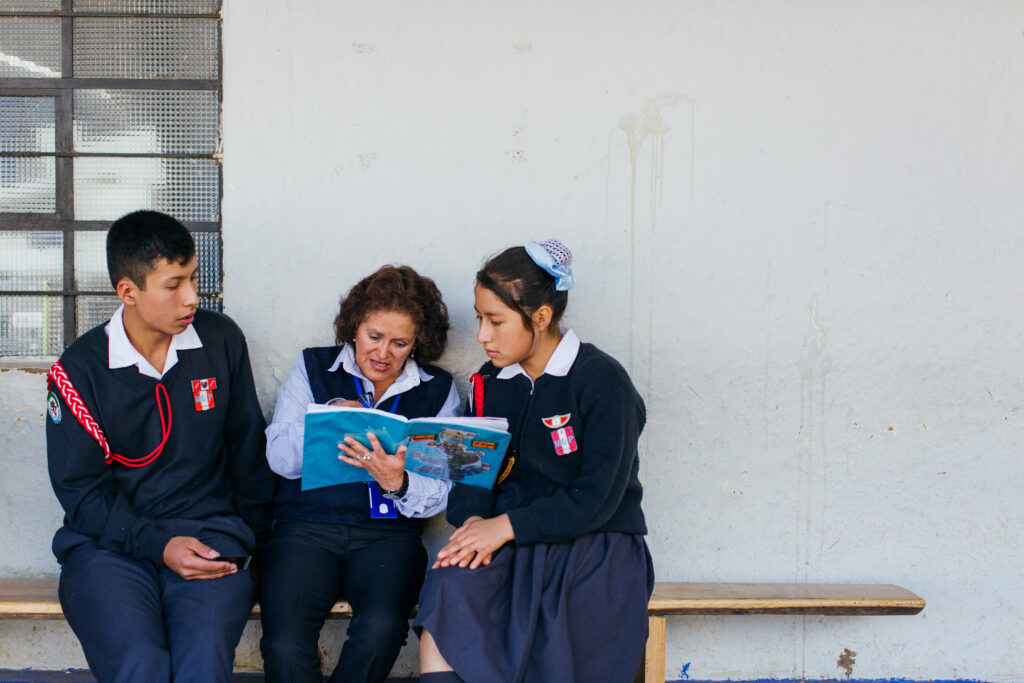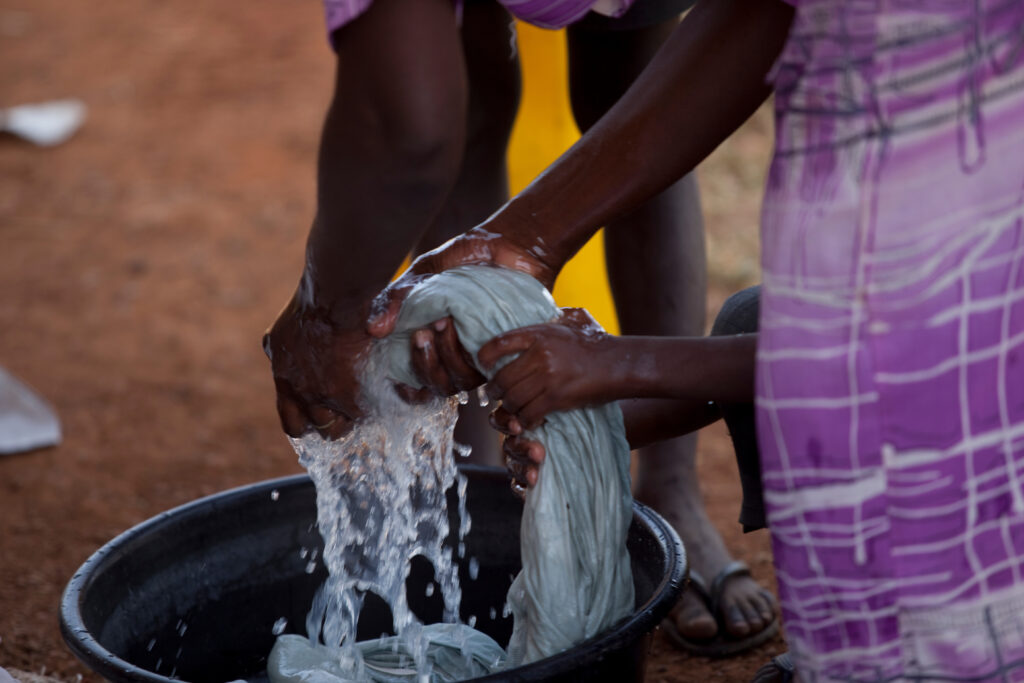In March 2017, the worst flooding in a lifetime hit northern Peru. Districts like Cascas, where Water For People works, was hit especially hard. The flooding was attributed to the combined effects of a changing climate and El Niño, and many people in Cascas were left to rebuilt homes and livelihoods and even entire water systems in the aftermath. See how three people overcame challenges, the Water For People response, and the importance of strong, local leadership in ensuring resilience.
Don Ángel
"The force of nature was so strong that I saw huge rocks and big trees moved by the force of water," Don Ángel said.

Don Ángel leads the water and sanitation office in the district of Cascas, Peru. He says he was hired because of his experience in environmental management and past work in rural communities. That experience was invaluable when the 2017 flooding washed away most of the district’s water systems.
"Eighty percent of the water systems in Cascas were affected," said Ángel.
District water and sanitation offices like those Ángel leads provide direct support to community water committees that manage water systems. Because of its close relationship to those committees, Angel’s office could quickly understand the damages and create a plan to repair water systems.
Read how Ángel helped the entire district recover after the flooding.
Doña Maria

Like many families in Cascas, Maria Montalvo Arce grows grapes. Cascas is known for its winemaking, which is an economic driver for the region.
Last year, the floods washed away nearly all of Maria’s harvest. She said she harvested less than 10% of her usual harvest.
The floods also left Maria without water for the first time in 20 years.
"The rain this year was different," Maria said. "Every year there is rain in this area, but never rain so strong that it cut off the water supply."
Read how Maria is moving forward.
Don Michael
"Everything was gone," Michael said. "The rain left nothing."
Michael Sagastegui is the president of the water committee in his small town of Pampas de San Isidro. In 2016, Michael spent his first year as president overseeing some much-needed repairs to the community water system, only to watch last year’s flooding wash it all away.
With support from the Cascas district water and sanitation office and Water For People, and with hundreds of hours of hard work from his community members, Pampas de San Isidro rebuilt their water system. Michael says they rebuilt it stronger than before, protecting it from future disasters.
Read how Michael led his community to rebuild their water system.

More About the Floods and Water For People Response
In March 2017, El Niño caused an increase in sea temperature ranging from 7°C to 10°C (45 to 50° F) in the northern Peruvian coastal and highland zones. The resulting rainfall caused landslides and devastating floods. The department of La Libertad was declared an emergency, and in Cascas district alone, where Water For People has worked since 2011, 24 water systems were damaged causing an interruption in water service to 3,773 families.
In Cascas, water sources, springs, and water distribution networks were destroyed. With all major roads washed away, there was no transportation in or out of Cascas. Helicopters had to bring in food and fuel. Over 30 communities lost their access to improved water services for months.
In response, Water For People, in close coordination with the Provincial Municipality of Gran Chimú, presented a proposal to USAID, and an emergency assistance project was executed in the Cascas district. The work involved the reconstruction of water collection systems, replacement of pipe segments, and the need to control three key aspects of water quality: a) installation of a chlorination system; b) provision of inputs for chlorination; and c) hygiene education, especially related to in-house water management and water quality control.
Before the recovery work began, a rapid disaster diagnostic was conducted by the local WASH office, called the Municipal Technical Area of Water and Sanitation (ATM), which Water For People has worked with very closely for the past eight years building technical, financial, and management capacity. The disaster response plan for Cascas was the first completed plan in the whole of the affected area.
As part of the emergency recovery project, Water For People helped the ATM train existing system operators on managing and repairing chlorination systems. Water committees were trained on maintaining the cleaning and disinfection of their water systems. Ongoing training for such support is built into the Water For People program. Without the strong ATM, these activities and successful implementation would not have worked.
The ATM was a key coordinator to assemble water committees and gain their buy-in on the recovery plan. They also executed the community education, including focus groups, home visits focusing on mothers, and school visits focusing on children. The ATM strategically split into two teams to effectively tackle reconstruction, replacement, and the chlorination of systems. They were the point of contact for technical assistance with all the system operators on the issue of chlorination.
Overall, 18 piped systems were rehabilitated, 20 water catchment spring boxes were reconstructed with full water quality analysis completed, 23 chlorination systems were repaired or added, and interventions were conducted in communities with 2,861 families. Twenty six water committees conducted community sensitization and training; 1,075 families were visited, and 877 attended focus groups.
With eighty percent of systems in the district of Cascas affected during the flooding, the strong management systems and leadership of the ATM were critical in the recovery. In September 2017 – five months after the flooding had ended – all the systems had been repaired and families’ water access restored. Without a strong district WASH office and good leadership, the coordination for such a recovery effort would not have been as efficient or effective.
District WASH offices lead the support of community-level water committees that manage water systems day-to-day. When the floods came, they became the first responders who contacted all the communities through their tight network and long history of working together.



